What does an architect consider before buying a printer? That was our question to 10+ forums. Around 100 architects replied to that thread.
Each and everyone had mentioned the following considerations: Ink cost, maintenance, print quality, and speed.
They also mentioned some of the best 11×17 printers for architects in that thread. So, based on their recommendation, our team went for a first-hand experiment.
You will read the experiment result in the coming sections. So, buckle up to read the top 8 tabloid printers for architects.
| Products | Main Features | Rating | |
|---|---|---|---|
1 All-In-One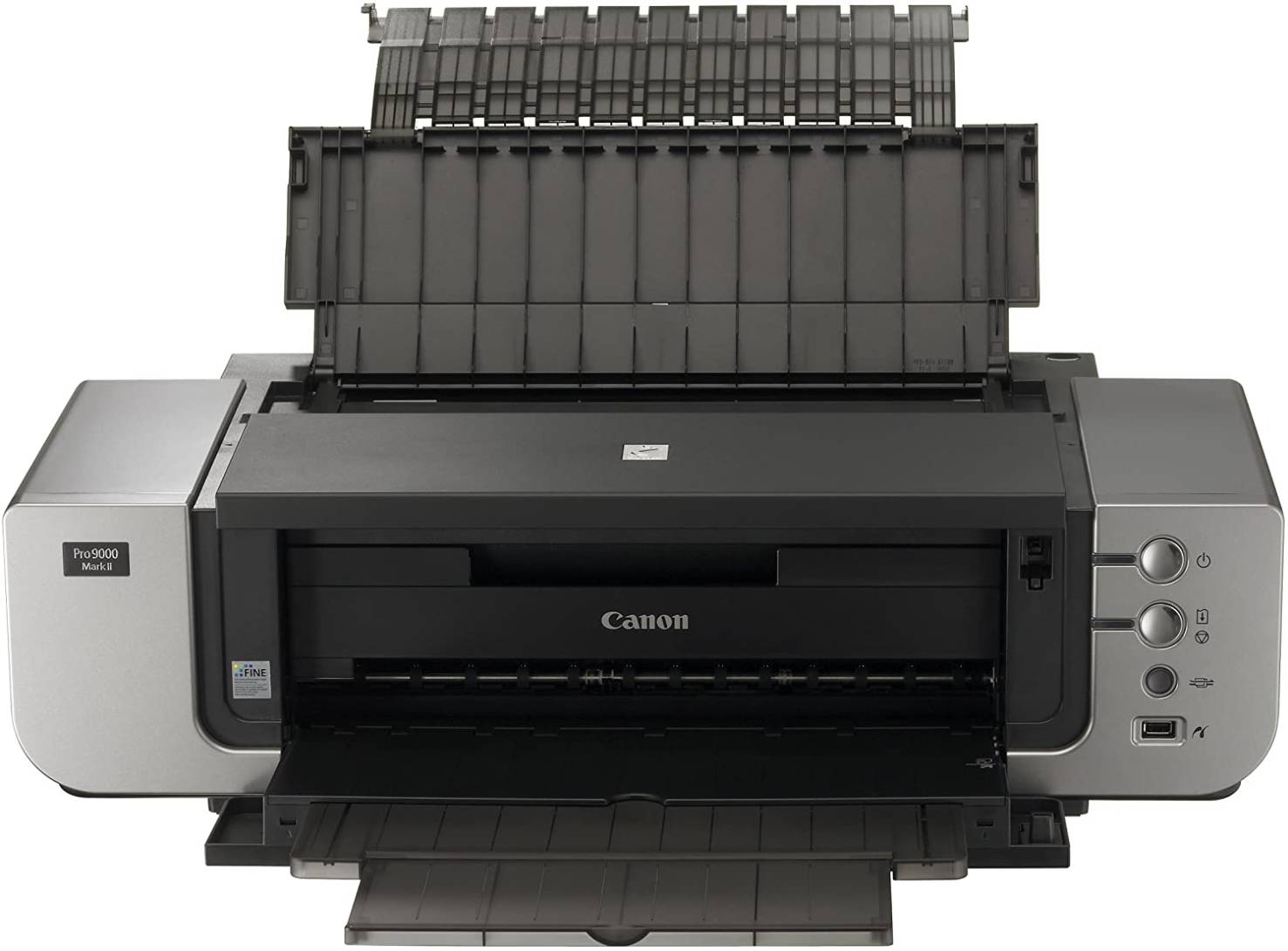 | Canon PIXMA Pro9000
| Check Price | |
2 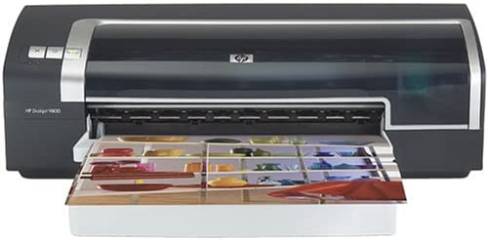 | HP Deskjet 9800
| Check Price | |
3 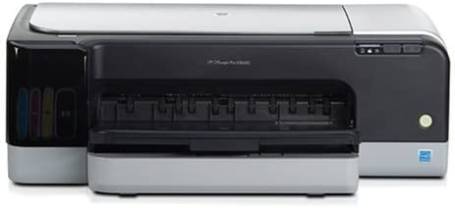 | HP K8600 Officejet Pro
| Check Price | |
4 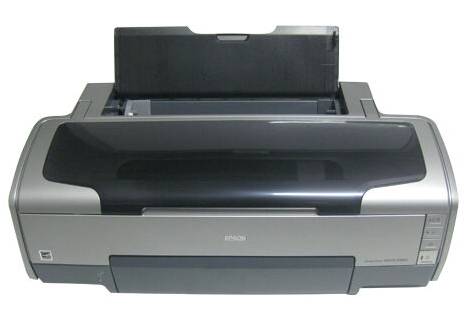 | Epson Stylus Photo R1800
| Check Price | |
5  | Epson WorkForce WF-7710 Wireless
| Check Price | |
6 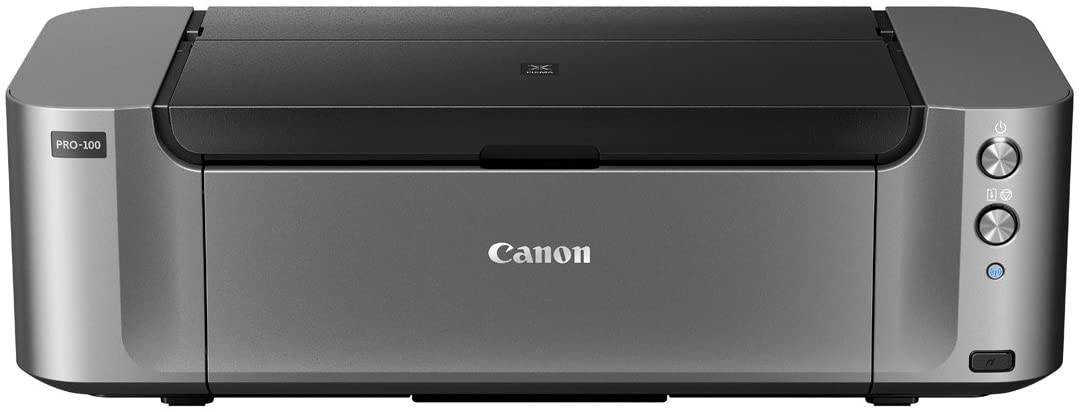 | Canon Pixma Pro-100
| Check Price | |
7  | Canon Pixma iP8720
| Check Price | |
8 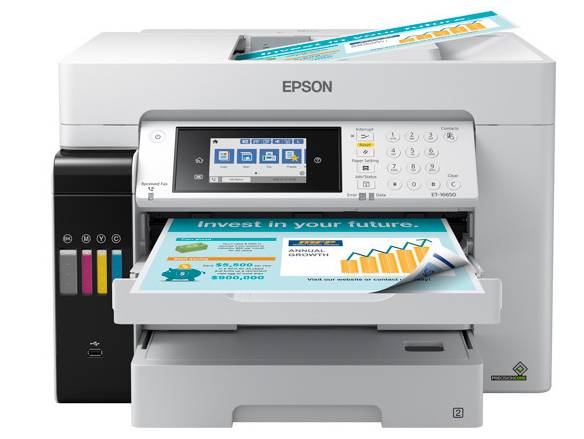 | Epson EcoTank Pro ET-16650
| Check Price |
8 Best 11×17 Printer for Architects
1. Canon PIXMA Pro9000
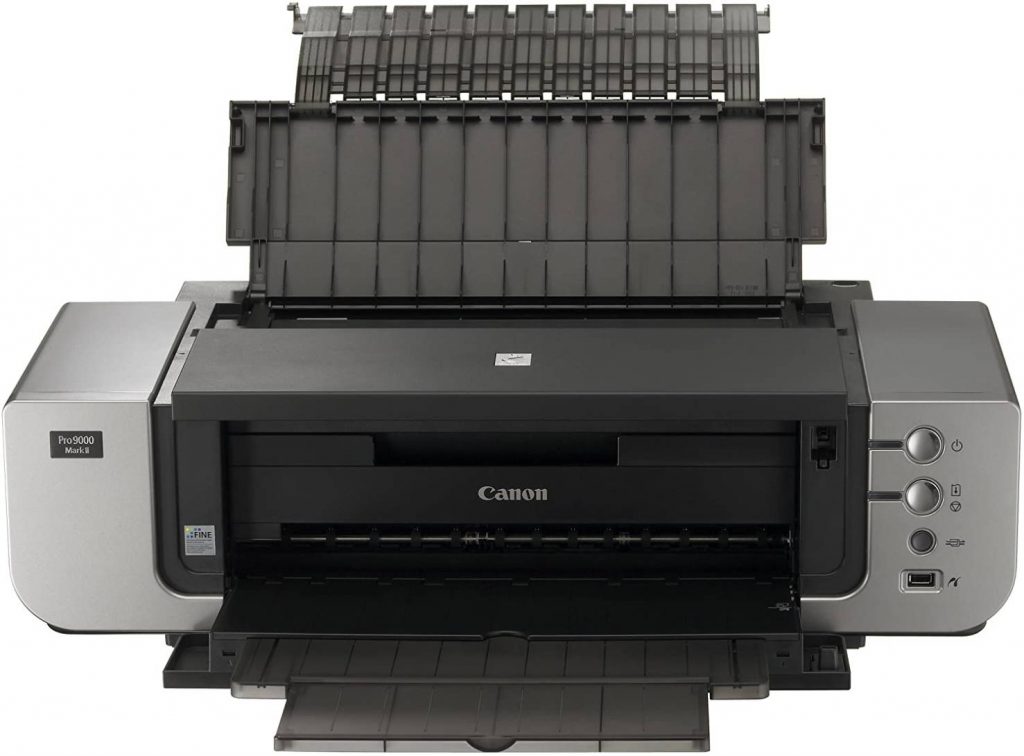
Canon Pixma Pro9000 has been dominating for the last 10 years in architect firms. The reason is overall quality.
Maintenance, print speed, and print quality are just decent for a starting firm. Many CAD developers have praised the outcome. Let’s check what is inside this printer.
Ink Economy
The ink cost is a bit high. We compared this with its sibling, pro 9500 PK. Our test showed that 11×17 cost .10 cents less than Pro9000.
But 4 by 6, 5 by 7, and 5 by 10 cost lower in the sibling’s printer. If your major focus is on 11 by 17 with other essentials, we don’t think Pro9000 will be a dealbreaker.
Maintenance
Not high. We call this moderate. The ink cost of a Canon is lower than competitors because of their economical pricing strategy.
Next is the paper jam and other stuff. If you are regularly clean, the printer lifespan will not be shortened.
Overall Quality
Print quality is satisfying. We printed drawings from 11 by 17. The quality of printing is quite good. Our expert noticed a slight color cast in the black and white mood. It can be avoided by shifting the grey cartridges.
However, the color print is different from monochrome. The background looked smooth. Gradient texture looked clean and crispy. The font in color mood was also legible, even in point 6. So overall it was good for us.
Print Speed
A3 and A4 print speed differs. The A4 took around 2m for the borderless, but A3 took 1.5 minutes. This speed is fair enough in comparison with the Epson R1800. Canon recorded slightly faster than Epson.
Things To Know
It has USB 2.0 compatibility with the PictBridge feature. The speed of the USB is good in all OS. Windows 10 and MAC worked well. But the lag is noticeable in Windows Vista.
Specs
Pros
- Easy to maintain.
- Affordable ink cartridge
- Good print quality
Cons
- There is no card reader
2. HP Deskjet 9800

We don’t know why people are still rating it down. Maybe it’s old. Features are not as good as the updated ones.
However, the print quality and the other essentials. Let us explain to you why.
Ink Economy
Compared with the Epson Stylus R320. This one has economical ink. The full cartridge for black text costs 3.8 cents. Graphical print costs around 11 cents. The Cost of R320 is nearly the same as the 9800.
Maintenance
Since the size is smaller than the usual tabloid printer, it has less maintenance. The power consumption is low.
You can easily clean up the paper trays. Ink replacement is also easy. You can change the cartridge on-demand.
Overall Quality
We are not saying “too good,” but enough for architecture design. The black text looked sharp on inkjet paper.
Common office paper frustrated us while printing black text: it looked choppy. Graphical output was also good, yet, there was a slight band in color. We tried the software color correction setup to crosscheck that.
The color adjustment was later fixed. Still, the murky outcome was noticeable. This was not sustained in drawings.
The lines and small font were clear in the drawings. We can give 9 out of 10 in drawings, but for photos, it will be 7.
Print Speed
Text printing took 5 minutes for 9 pages. Photo and drawing recorded 11 and 10 minutes.
We think it’s fair enough for an old device. Our team compared the speed with competitors; the speed of Canon and Epson was .5 slow.
Things To Know
HP backs this device with all essential supports. It has USB and parallel connectivity. The PCL language feature helps to understand Windows better.
Specs
Pros
- Takes less space
- Low running cost
- Consumes less power
Cons
- You need to swap cartridges for photo print.
3. HP K8600 Officejet Pro

K5400 and K8600 have a huge difference in appearance. 8600 looks more transparent than the 5400. This is also easy to maintain. Let’s learn more about the product.
Ink Economy
Ink cost for K8600 is similar to K5400. The black text cost 1.5 cents and 4.2 cents for color. Fair enough! If 8600 provides better performance, why should you buy K5400? Ink cost is safe.
Maintenance
So far, it has amazing maintenance. We could see the paper jam and ink volume through the transparent glass. It is easy to open and replace the cartridge.
The four inks are separated, which is easy to replace. Same experience is for the paper jam clearance. It is one tap away.
Overall Quality
We tested the quality in a normal mood. The color quality was good with a slight band on graphical print. It was mostly on the left edge.
Hues and image clarity were good. The drawing looked average. This is legit for this price range. Tabloid outcome was satisfying for us. We call this semi-professional.
Print Speed
Our 15 X 10 cm photo took 1.30 for printing. 11 x 17 was less than a minute. Overall speed performance is good enough.
Things To Know
Our team tried business printing at 1200 resolution. The outcome looked good. To do that, we used a USB 2.0 socket. The driver’s speed was lag-free. Only USB was tested. We did not try JetDirect Ethernet. But based on people’s opinions, we can say “it’s good to go.”
Specs
Pros
- Transparent cover
- Easy to clean.
- Perfect for wide-format printing.
Cons
- Power consumption seems a bit high.
4. Epson Stylus Photo R1800

A multi-purpose printer. We used it for photo and drawing printing. Each result showed us a glamorous look. The best part of each outcome is the color hue: quite accurate!
Ink Economy
We thought the ink cost would be higher for the smooth color outcome. Totally wrong! The average ink cost for A4 size glossy photo paper is 2.6 cents (30% black text)
A3 costs are slightly higher. We don’t think this is expensive. Compared with Canon and HP, it is moderate.
Maintenance
Hassle-free. There are four controllers at the right-hand of the printer. Cartridge and paper tray switches are visible. Just pressed that and adjusted the paper feed.
The cartridge setup is almost the same. We could handle the eight ink setups for refilling and clearing the wastage. This is pretty unusual for competitors: especially for 8 ink cartridges.
Overall Quality
Extremely good! The borderless photos were smooth enough. Color accuracy was 98% clean. This experience sustained even for the architectural drawings: the font at point 4 was legible. But for stylish font points, 12 was perfect.
The best part is the glass ink. It will fade the color for at least 80 years: Clinically proven!
Print Speed
Canon i9900 is slower than this model. R1800 took 1.18 for printing 4 by 6 photos. But Canon took 2.29. The speed for 11 by 17 also fluctuated.
Things To Know
It has CD DVD printing features. We did not try. But the driver and software are good and easy to handle.
Specs
Pros
- Photo last longer
- The color quality is good.
- Updated drivers and software
Cons
- No SD card slot.
5. Epson WorkForce WF-7710 Wireless

WF-7710 offers everything that you need. It has a scanner, photocopier, and printer. We did not see these features in our earlier reviews. Let’s see what WF7710 has.
Ink Economy
Frankly speaking, the ink cost is high. We compared it with HP 7720. Average monochrome costs 3.2 cents in WF710.
But HP cost 2. Cents. Color printing is also lower in HP. Epson cost 11 cents for color. HP is still the winner in this area.
Don’t go back by seeing the ink cost. The cost literally paid off for us. How? You will know that in the quality section.
Maintenance
Epson is positioned better in maintenance. Their maintenance box is dedicated to storing the wastage. We could see the maintenance box status in the printer’s LCD. This allowed us to schedule the cleaning time.
Other than this, the average ink replacement and paper jam cleaning are quite easy. Expert architects rated it 4 out of 5 for smooth maintenance.
Overall Quality
As we said, ink costs will pay off. Here is the proof. We printed Excel charts and Powerpoint handouts on this printer.
The font looked clear even in points 4 to higher. Serif and San serif fonts were clear enough for naked eyes.
We witness a slight color band in the background fills. It occurred mostly at the stage of color shifting. This is indetectable if you don’t look closely.
Photo printings are also satisfying. 4 by 6 snapshots printed well with a little dull look. It is considerable for in-house usage.
Print Speed
Compared with Brother MFC-J6935DW, WF-7710 is 2ppm slower in monochrome printing. Brother is also 25 seconds ahead in color printing. We don’t think this speed will impact your work: especially if you look for quality drawings.
Things To Know
It has all the connectivity options. USB, Ethernet, Wi-Fi, Wi-Fi Direct, and NFC are available. Epson offers an interactive mobile app for IOS and Android. You can edit and reconstruct an object before printing or scanning.
Specs
Pros
- Good print quality
- Perfect for large printing.
- ADF, Scanner, and auto-duplexing.
Cons
- One paper cassette
6. Canon Pixma Pro-100
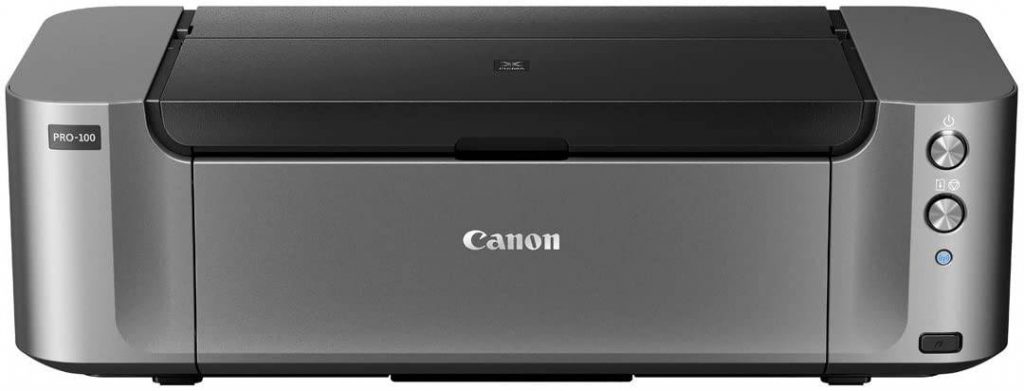
Photo printers sometimes bring the best outcome for architects. We proved that through the Canon Pixma Pro-100.
Pixma series is renowned for amazing photo outcomes. But the drawings are not bad. You will know more about it in the coming sections.
Ink Economy
This printer is a bit costly for new architects. Look at the comparison between Epson R2000pk and Pro-100.
Canon Pro-100 costs 87 cents for 8 by 10, 1.6 for 11 by 17. R2000 pk costs 73 cents for 8 by 10. 1.3 cents for 11 by 17. Slight difference. But the quality of Pixma is unbeatable.
Maintenance
Pixma maintenance is easier than Epson. It does not jam fast. The ink wastage is also detectable. So, the risk is less. Our average maintenance time is 10 minutes weekly for this printer.
Overall Quality
Monochrome and color print looked sharp for us. Color print was smooth even in the dark areas. We tested it on standard mood. In our test, we also noticed slight color shifts in monochrome images, especially in gray areas.
Print Speed
Photo printers tend to slow. Pixma Pro 100 is the real proof. It timed 51 seconds slower than the Epson R2000. We tested it over a 4 by 6 printer.
Things To Know
It has WiFi, Ethernet, and USB features. The OS compatibility is also good for all devices. We did not struggle to install the drivers. It patched well with the OS.
Specs
Pros
- Gallery worthy pictures
- Moderate price for multi-purpose usage
- Fast enough
Cons
- Graphical output could be better.
7. Canon Pixma iP8720

iP8720 is a perfect competitor to the Epson R2000 and R3000. Price, Cost, and everything is fairly good enough. We are explaining why below.
Ink Economy
We printed over 4 by 6 photo paper. It costs 24 cents. This range is less than the Epson R series. The tabloid printing cost is also lower than we estimated.
Maintenance
Printhead, ink status, page status are visible in Canon’s software. We could easily check and solve the maintenance issues as soon as the print quality drops. This maintenance feature is easier than the competitors.
Overall Quality
Above average. Architectural drawings were sharp; even the fonts at point 6 were clean. There was no tint in the monochrome print.
The photo quality is just enough. Powerpoint handouts and Excel charts were pretty legible. This is the winning position from Epson R2000.
R2000 has a slight color shift. So based on the case, this is considered good.
Print Speed
We tested 4 by 6 printing speed. The outcome took 58 seconds for iP8720. But the same type came within 53 seconds in the Epson R2000. We don’t think this is a dealbreaker, though.
Things To Know
This model supports cloud printing. That’s not the end! The driver and software perform faster. We had minor issues with the setup. The support team helped us to get rid of this. Still, we recommend reading the manual.
Specs
Pros
- Wireless Pictbridge
- Above-average photo quality
- It can print over the optical disc
Cons
- Only 120 sheets capacity.
8. Epson EcoTank Pro ET-16650

Mid-size to small, every architecture farm can afford this printer. The average cost is lower than some giant competitors: Brother and HP.
Plus, the AIO feature ensures scanning, copying, and faxing. What is inside the ET16650? Check it out.
Ink Economy
We tested the competitor’s ink cost; Brother MFC-J6945DW and HP750DW. Brother cost 1 cent lower in monochrome and 5 cents in color printing.
But HP could not beat ET16650. It costs almost 1.2 cents for monochrome and 7 cents for color. You might have shifted the thought for Brother. Wait!
Epson offers an affordable two-year ink facility. The choice is yours.
Maintenance
The maintenance box is optimized. We could check the ink and paper status. One of the satisfying features is cleaning: handy enough to clean the cartridge. In the case of paper jams, there is automation to clean the barriers.
Overall Quality
It provides good feedback for business applications. The text looked legible even in point four. Graphical handouts were above average.
We did not find any noticeable flaws. Not even in the color shifts. Only a minor drop was noticeable in dark fills and gradients. It is not a dealbreaker ( We repeat that).
Photos were good. Semi-professional pictures: pretty acceptable for us. The quality is better than HP 750 DW
Print Speed
Moderate speed. 27.5ppm for Microsoft document printing, which is fairly good. HP 750Dw is .50 seconds slower than this. The color print took a bit of time. We will rate it 4 out of 5.
Things To Know
Updated connectivity. USB, Wifi, Ethernet, and Bluetooth are available. We connected with our Core i7 processor.
The driver installation was fast, and performance was good. Same experiences happened with MAC and IOS. Realme C25s worked smoothly with the Android apps.
Specs
Pros
- 2 years of Ink facilities.
- Low running cost
- Fast connectivity for smartphones.
Cons
- The initial price seems high
Buying Guide: What To Look For Before Buying?
Quality of Printing
Two major things you should look at: one is the monochrome print. Second is the color print. You can judge the quality by evaluating the following areas
- Color hue
- Text sharpness
- Ink quality
- Color shifts
- Hairline
Checking the mentioned areas will help you to decide on better options. Since it is dedicated to architects and engineers, we recommend you to focus on the drawing quality.
Printer Size
Printer size matters. Large size takes more space to accommodate. If your office desk is small, we recommend you to go small.
Printer Speed (PPM)
Most people ask what the optimum speed for a printer is? The answer is: “It depends.” There is no rule of thumb for an average speed. So, the fast it is. More time saves.
Ease of Use
Driver installation, connectivity, and maintenance are the major factors for ease of use. Check how easy a printer is to use based on the checklists. You will find the measure of flexibility.
Multi-functionality
Having a scanner, photocopier and fax is a blessing for a printer. Check these facilities if there is nothing like that. Don’t worry. We recommend you check for the software functionality. This is just optional.
Connectivity
Check the common connectivity features in a printer. Updated technology should get the most priority. So, USB, wifi, wifi Direct, Bluetooth, SD card Ethernet, and more options are essential to consider.
FAQ
What Type of Ink Should I Use When Making My Architectural Prints?
It depends on the output you want. The regular ink that comes with an inkjet printer is good enough. If you need a deep visual explanation, we recommend changing the ink cartridge with compatible ink nozzles.
What Are The Few Specs that Architects Should Look Into While Buying A3 Printers?
We strongly believe in the following things: maintenance, ink economy, print quality, print speed, and Os compatibility. These are the major specs that an architect should look at.
Inkjet or Laser Printers are Better for Architects?
Inkjet is the wise choice for architects. The print quality is sharp for drawings. Clear and legible print quality is essential for an architect. Laser printers cannot provide that. So, Inkjet is a wise choice.
Final Words
The products we have reviewed are a result of architect choice. Our team experimented with why they loved it.
So, we recommend you crosscheck our review based on your demand. One more thing, some products are offering exciting deals for a limited time. Save your budget and get the best deal.